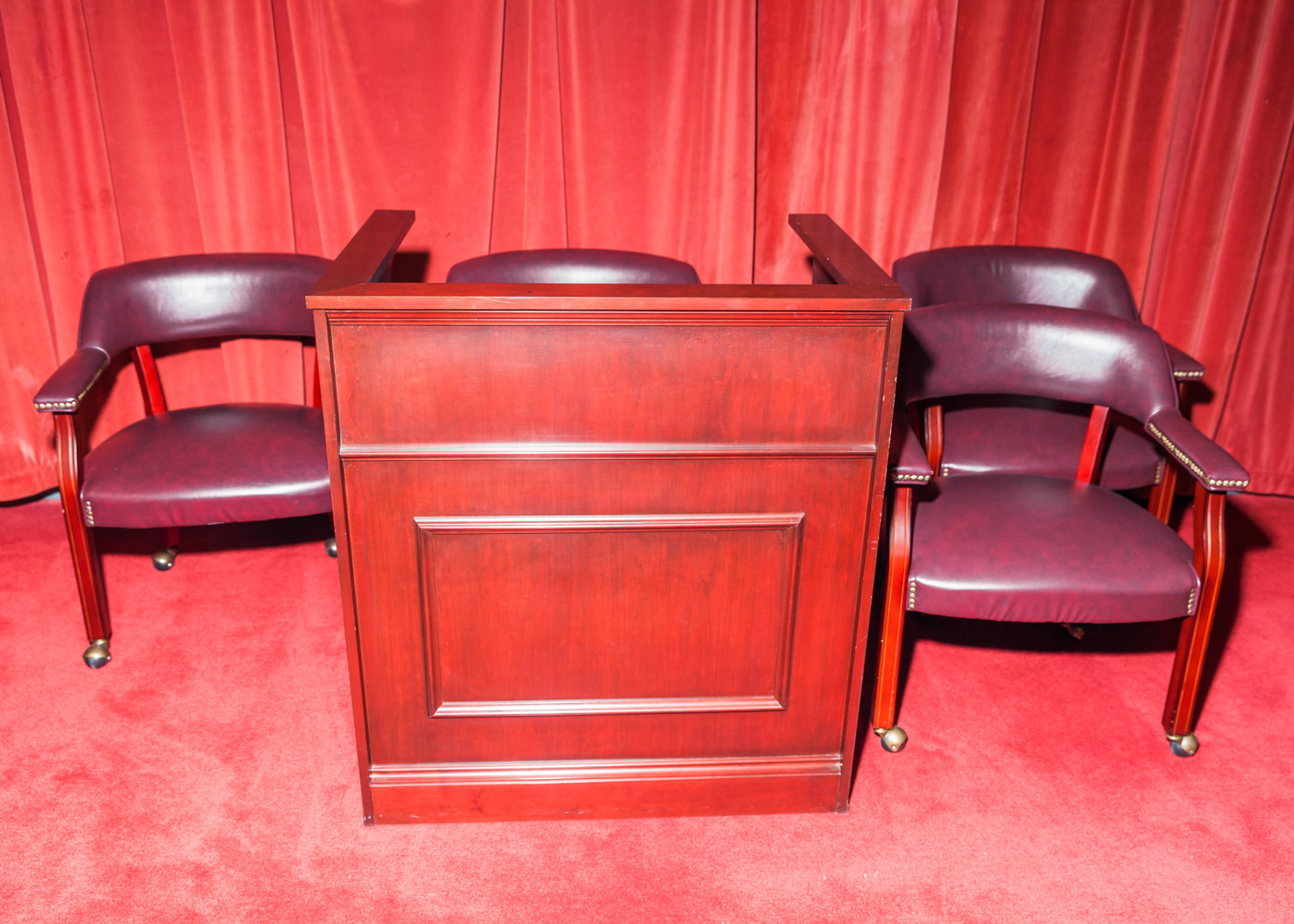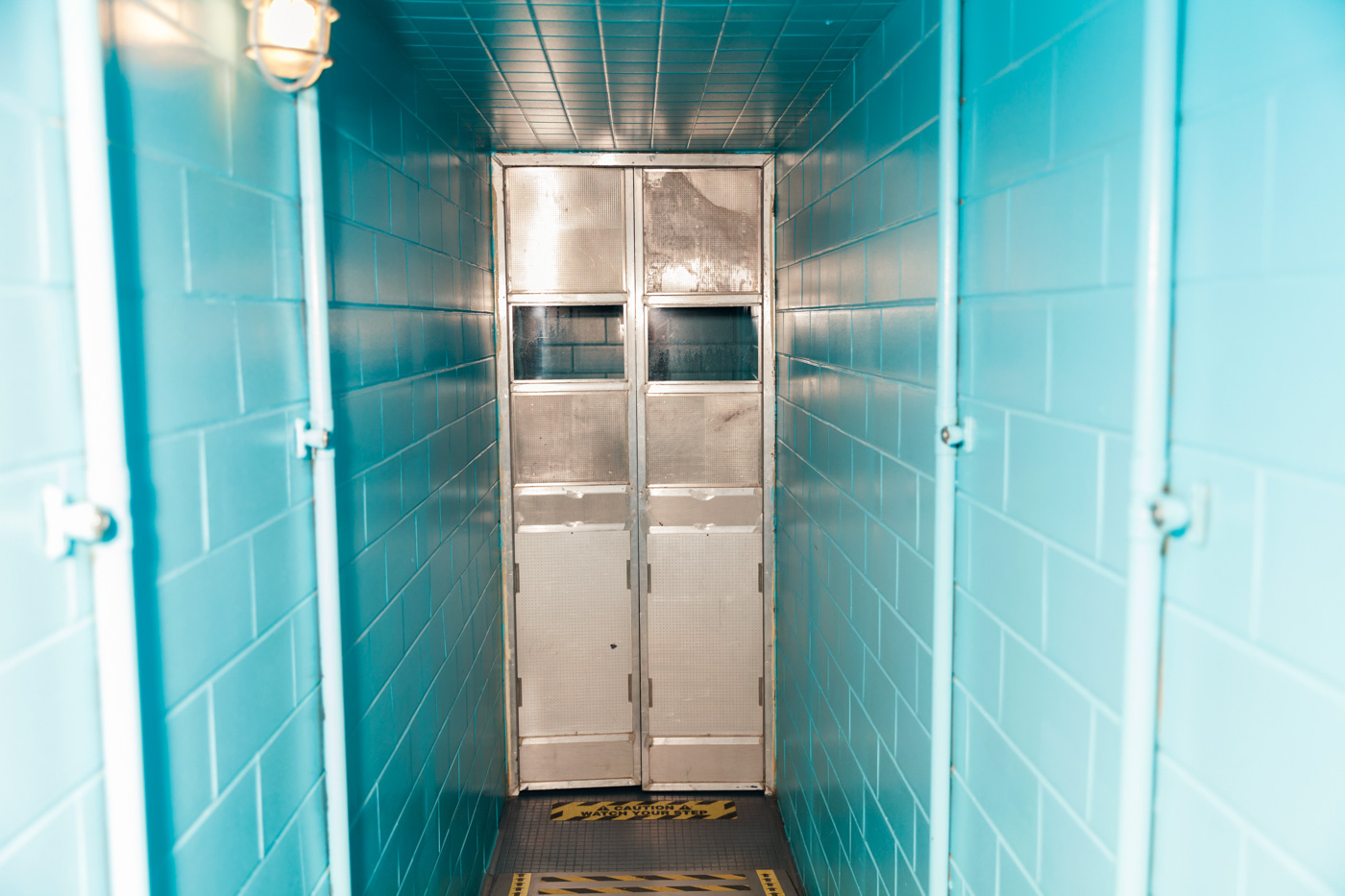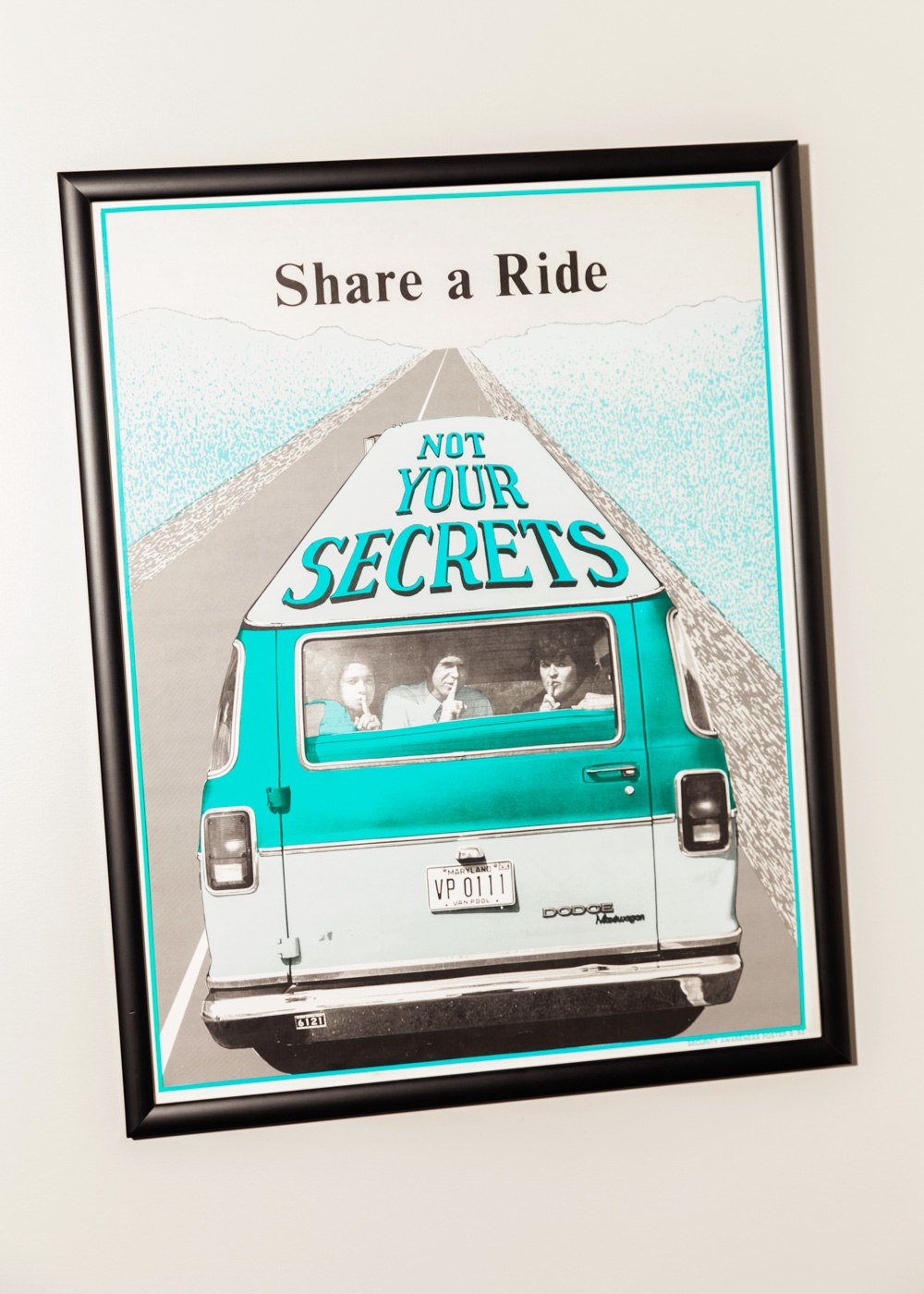






Artist's Statement
Maggie Shannon
The Hallways are endlessly long and dimly lit. I walk along the path our country’s leaders would have walked, rushed secretly through the blast doors and into the decontamination chambers where they would have been forced to strip, burn their clothes and be blasted with water. After that, those not suffering from injuries would have been led to a room full of bunk beds and a small TV. Another room includes a painted mural of Washington, D.C. intended to act a s a backdrop for the politicians speaking to the people of a country under attack, if not already destroyed. The architects hope the familiar site of the Capital building would ease the minds of Americans left alive after a nuclear explosion.
This is the Greenbrier, an opulent resort tucked away in the mountains of West Virginia in White Sulphur Springs. The hotel, with a dazzling if kitschy interior designed by Dorothy Draper, has a proud history of hosting diplomats, royalty and presidents. A recent addition includes a casino built beneath the front driveway. Beyond the hotel’s lavish wings is a giant metal door, covered in draper wallpaper and hidden in plain sight. From 1958-1995 the Greenbrier was also the home to a 112,544-square-foot secret bunker meant to host the House of Representatives and Senate in the event of nuclear attack. Before the Washington Post’s 1992 expose on the facility, it was maintained in a state of constant, paranoid readiness. A group of government employees, under the guise of TV repairman for the hotel, guarded and maintained the bunker until it was decommissioned.
The Greenbrier Bunker is now a well persevered time capsule. Its function varies between hosting a cooking school, bunker tours, and visiting football teams. The hotel leases the rest of the space with its own functioning power plant to Fortune 500 companies for their computer servers. Yet the history of fear and paranoia it represents are eerily familiar in our current political climate.


